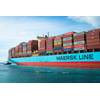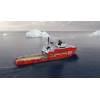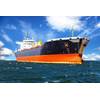E&P Companies Struggle on RoI
International exploration & production (E&P) are struggling to make money from offshore investments made during the latest investment upturn, according to a new study by Rystad Energy.
Rystad Energy has evaluated all offshore oil fields sanctioned since 2010 and ranked them by estimated value per barrel of oil (boe) under various oil price scenarios. The return on investment (RoI) figures were not up to the mark.
The sanctioning activity was record-high during the strong investment cycle from 2010 to 2014, when energy companies reached final investment decisions on offshore oil fields collectively representing close to 40 billion boe of total resources, said the report.
The amount of sanctioned volumes peaked at 13.2 million boe in 2011 at the height of $100-plus oil prices, before nose-diving to a new nadir of just 0.6 million boe sanctioned from offshore oil fields in 2016. Over the last two years, the trend of sanction volumes has ticked up.
According to the report, offshore projects sanctioned between 2010 and 2012 have barely been able to generate any value for E&P companies.
Projects sanctioned between 2013 and 2014 are expected to have no value creation. For upstream companies to come out those investment years without massive losses, the oil price will need to increase to around $70 per barrel, it said.
At the same time, we see that the value creation is positive for sanctioning between 2015 and 2018, even when applying a future oil price of only $40 per barrel.
The reason why the projects sanctioned between 2010 and 2014 are struggling to create value relates primarily to the cost structure. These fields were approved when oil prices were above $100 per barrel, and sanctioning activity was at a record high. These two elements led to an increase in costs within the E&P industry, which drove up the development cost per boe,” Erlingsen observed.
The key driver for the 2015 paradigm shift relates to cost levels for the offshore industry. The main reasons for the cost reductions are lower unit prices within the industry (like rig rates), redesign and simplification of new projects, a weaker local currency for some key offshore regions (such as the UK, Norway, and Brazil) and efficiency gains.
Related News




